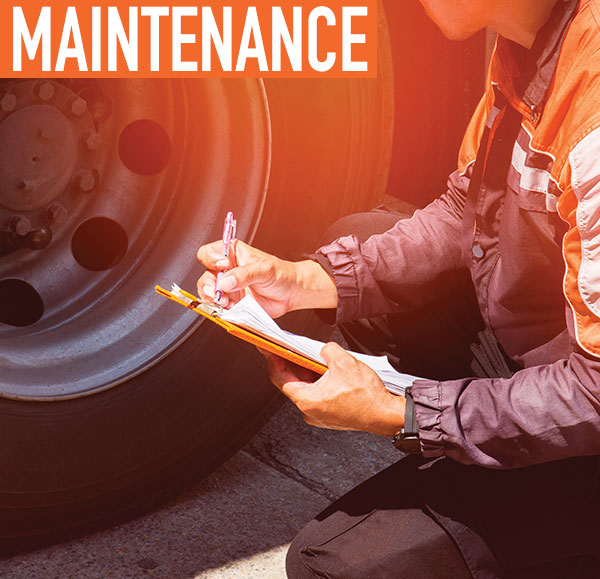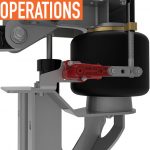In last month’s issue, we learned you don’t always get what you pay for, especially with tires. You could be getting more than you’re paying for and could significantly cut operational costs. The best way to know the value and life of your tire is to conduct tire tests through a tire evaluation program.
Previously we learned ways to evaluate steer tires and drive tires as well as best maintenance practices. This month we’ll learn about casing and retread evaluations and how to determine cost per mile and the effects tires have on fuel economy.
PROJECTING WEAR
Since deeper tread squirms, wear rates are faster at the start of the evaluation when the tread is near full depth, then level out toward the end. After two to three checks, you should have solid wear data on your tires. With this wear data in hand, you can now make projections on how many more miles the tires should last before they’re pulled for retreading. This gives you an apples-to-apples mileage comparison and provides the basis for your first cost per mile figure once you factor in the purchase price.
Now that you have data on how much tread is worn on your tires, how do you make your calculations?
First, calculate tread wear rate in miles per 1/32 inch of tread minus miles traveled divided by tread consumed. Tread wear rate = (current mileage – installation mileage) / (original tread depth – current tread depth). As an example, the first test truck’s current odometer reading is 64,000 miles, and tires were installed at 40,000 miles. The original tread depth was 26/32 of an inch, and the current depth is 20/32 of an inch. So, 6/32 of an inch were worn off. Thus, the wear rate is 24,000 miles divided by 6, or 4,000 miles per 1/32 of an inch. Take the average of all the tires in that group on that truck and eventually the average for that group across all trucks. Refer to Diagram 1.

Next, calculate projected miles to removal. You’ll need the original tread depth of the tire and the pull tread depth. For drive positions, a typical pull depth might be 4/32 of an inch, and in the example, the evaluation drive had 26/32 of an inch of tread. Projected total miles to removal = wear rate x (original tread depth – pull point tread depth). In the example: 4,000 x (26-4) = 4,000 x 22 = 88,000 miles.
If time weren’t a factor, you could run a full-blown evaluation getting true mileage figures on your evaluation tires plus the number of times the tire could be retreaded. This is cradle-to-grave documentation, which is good to maintain as part of normal operations. But that could mean years to gain quantifiable data. Instead, we recommend two things:
Look at the warranty on your evaluation tire and compare it against the tire you’re currently running. The manufacturer should offer a casing warranty in the event that the tire is not retreadable for certain reasons (but not for damage caused by severe operations). The manufacturers’ warranties typically range from four to seven years from the date of manufacture and offer casing credits ranging from about $40 to $130 on the first retread. Most manufacturers also offer a reduced casing credit for the second retread. This warranty comparison should give you a feel for how well the manufacturers back their products.
Talk with your tire dealer or retreader and ask about retreadability of the evaluation tires compared to your current tires. The retreader may give you actual rejection rates for the two brands (also known as RAR or “returned as received”), but be sure the information relates to operations similar to yours. Also, if you plan to sell the worn casings, ask what they pay for a virgin casing of each brand.
Your tire dealer may also be able to refer you to other fleets that are running the tires you are considering. You could ask them what they’re experiencing in retreadability.
COST PER MILE
You have your data, now you can crunch numbers. The original tire cost per mile is a simple calculation. Take the purchase price of your evaluation tire and divide by your projected mileage. As an example, you may be paying $400 for your evaluation drive tire and your projected mileage is 88,000 miles. So, divide your cost by the mileage and you come up with $0.004545 per mile (or $4.55 per 1,000 miles). See Diagram 2. If your current tire costs $550 and is projected to deliver 10% more mileage or 97,000 miles, you’d be at $0.00567 per mile (or $5.67 per 1,000 miles). So, even if your evaluation tire didn’t outperform the incumbent tire in mileage, it did best it in cost per mile, and that’s the metric that’s most important.

If you expect to sell the casing back to a retreader and not retread it for your own use, then there is another step in the calculation to account for the casing re-sale. (And this example assumes that 100% of casings are retreadable.)
Take your purchase price and subtract the retread casing resale value to determine the net cost of the tire, then divide the result by your mileage. For example, if you paid $400 for the tire and expect to sell the casing for $40, your net cost would be $360. If you received 88,000 miles on that drive tire, your cost per mile of tread would be $0.004091 (or $4.09 per 1,000 miles). See Diagram 3.

AFTER EVALUATION
If your evaluation tire outperformed the incumbent as in the example above, do you make a wholesale change in upfitting your equipment? It is recommended to move forward to confirm your findings, but not all the way forward. If you followed through properly, you completed a very important evaluation, which now gives you confidence in the new tire and how it should outperform the incumbent. Continue to monitor the performance of the tires until they are removed, but you should now have the confidence to start fitting more of the “new” tires. So, begin to purchase 50% of the “new” tires for six months—both in replacement and through your truck OE if available—and then at a year, move forward on full-scale standardization. It won’t take long to see the proof on a grander scale.
FUEL ECONOMY
The cost of tires detailed above is not the only impact that tires can have on operating costs. It takes energy (i.e., fuel) to overcome tire rolling resistance and move them down the road, and tires are not all equal. For Class 7 and 8 trucks operating on good pavement, SmartWay verified tires should offer lower rolling resistance—thus, better fuel economy—than non-verified tires. Because work truck operations typically have a significant amount of stop-start and/or engine idling, it can be extremely difficult to quantify the tire effect on fuel economy, but tires with lower rolling resistance like the Cooper Work Series RHD drive tire will contribute some increment of fuel savings.
It is my hope that this information has been helpful as you work to assess the various tire options you have available with an eye on reducing costs over the long term. While it takes time and effort to conduct your own testing, it can be done, and it’s well worth it as you work to gain a competitive edge for your fleet.
ABOUT THE AUTHOR
Phillip Mosier is the manager of commercial tire development at Cooper Tire and Rubber Company.
MODERN WORKTRUCK SOLUTIONS:
OCTOBER 2019 ISSUE
Did you enjoy this article?
Subscribe to the FREE Digital Edition of Modern WorkTruck Solutions magazine.





